Notre Dame Cathedral is one of the most iconic landmarks in Paris and a must-see for any visitor to the City of Light.
The cathedral, a Gothic masterpiece, holds centuries of art and history within its wall
Sadly, in 2019, a fire caused significant damage to the cathedral, and it was closed to the public.
However, after extensive renovations, the cathedral reopened its doors in December 2024.
This guide covers everything you can explore inside Notre Dame Cathedral. It also highlights which areas are accessible to tourists, ensuring you won’t miss anything during your visit.
Buy TicketWhat’s ahead:
The Nave and Aisles
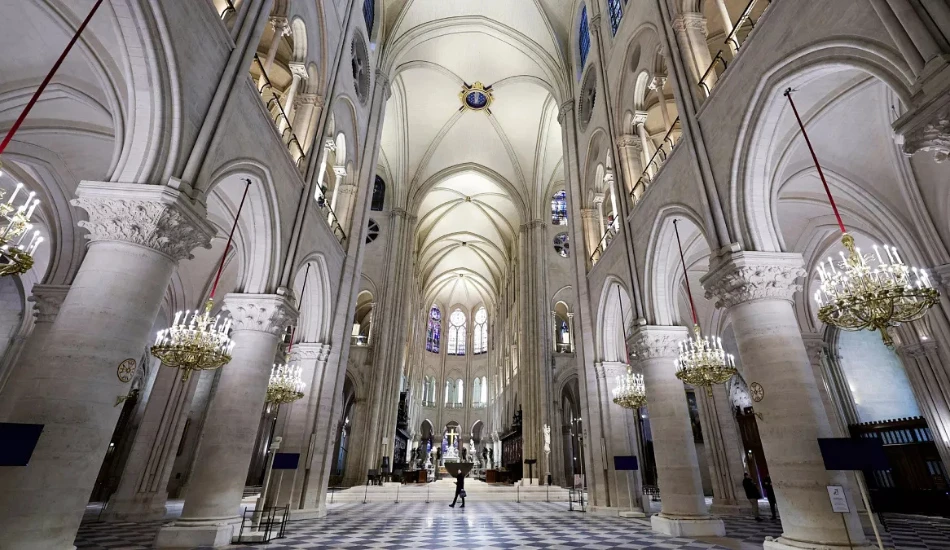
Related Reads
The nave is the central area of the church where people gather for prayers and services. At Notre Dame Cathedral, this space inspires awe with its tall columns, high ceilings, and serene ambiance.
After the fire, the nave was dark and covered in soot, but the renovations have transformed it into a much brighter and welcoming space. Sunlight now streams through the repaired stained-glass windows, casting a golden glow on the polished limestone walls.
The floor, with its checkerboard marble design, sparkles beautifully, adding to the serene atmosphere.
The side aisles, located on either side of the nave, are often used for processions and rituals. Tourists can walk through these aisles to admire the intricate architecture and get a closer look at the exquisite details of the church.
Visit in the morning for the best lighting and a quieter atmosphere to enjoy the beauty of this space.
Recommended
The Choir and Apse
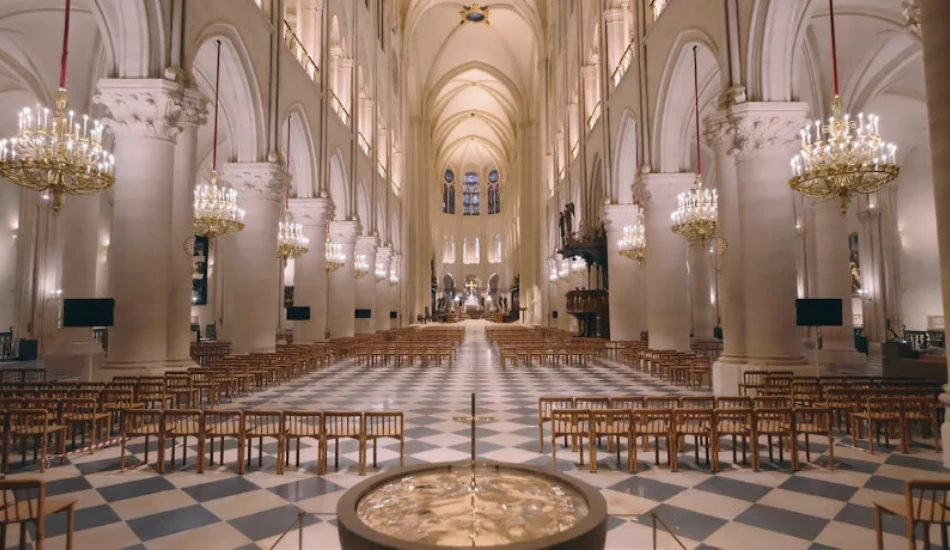
The choir and apse are among the most sacred and tranquil areas of Notre Dame.
This is where the altar is located, along with the beautiful wooden choir stalls that have been used for centuries during religious ceremonies.
While this area remains closed to visitors for now, you can still view it from the side aisles, the ambulatory (a walkway around the choir), and the crossing of the transept (where the nave and side sections meet).
Even from a distance, the intricate details and the peaceful atmosphere make this sacred space a highlight of any visit.
Stained Glass Windows
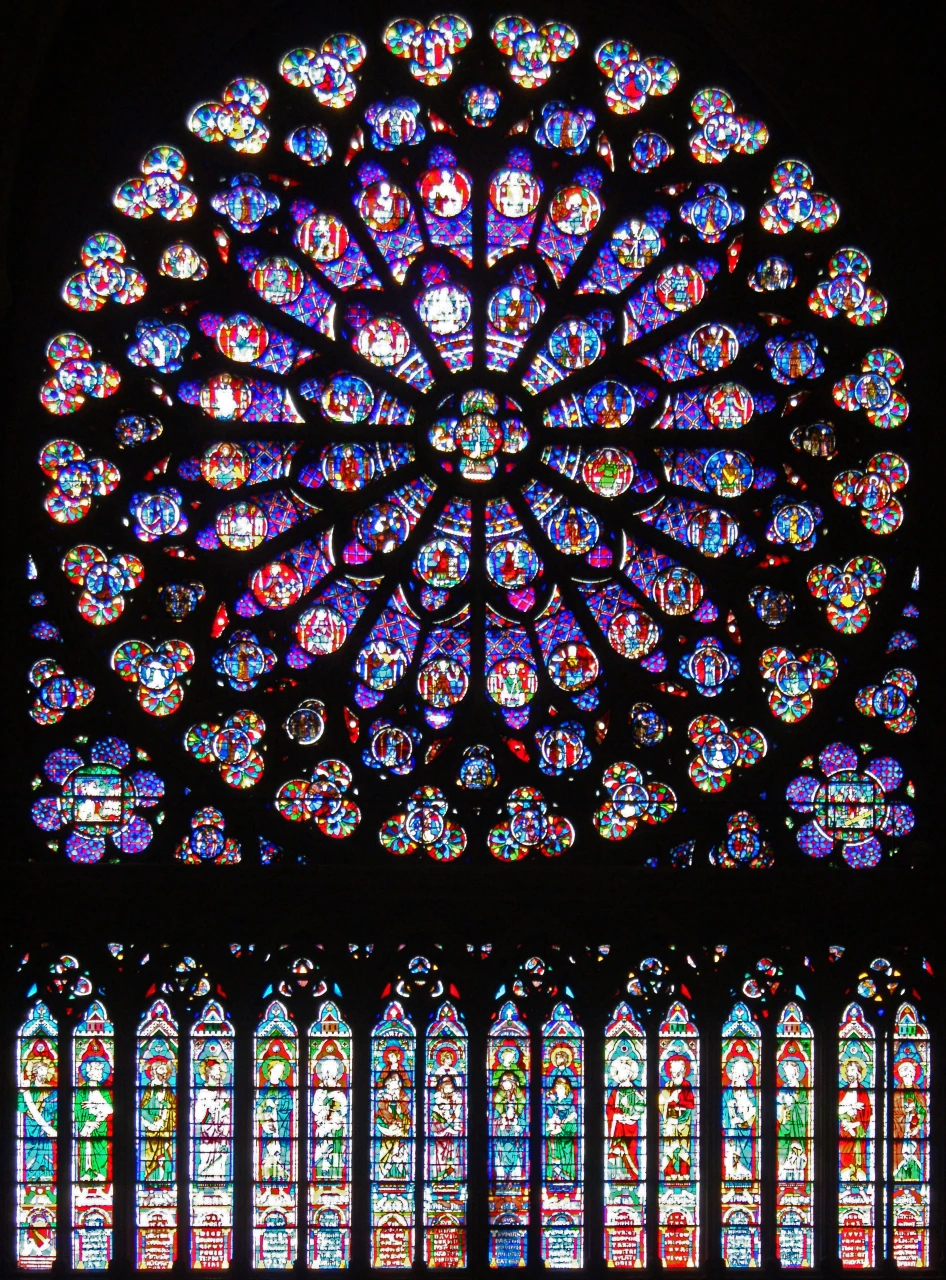
The stained-glass windows of Notre Dame are not just architectural features but masterpieces of storytelling and craftsmanship.
Many of these windows date back to the 13th century, depicting biblical stories and the lives of saints and kings.
Each piece is carefully crafted with vibrant colors and intricate designs, making them a true wonder.
- The Rose Windows: Notre Dame’s three rose windows are the most famous, with the largest one on the west side spanning over 40 feet (approximately 12 meters).
This window portrays the Last Judgment and fills the cathedral with a kaleidoscope of colors as sunlight passes through.
Stand near the west side in the late morning to see sunlight transform the interior into a rainbow of colors.
Sculptures

Notre Dame is famous for its sculptures, which bring history and spirituality to life.
The gargoyles, known for their dramatic and mysterious appearance, were originally designed to ward off evil spirits and drain rainwater.
Today, they are a favorite for visitors, adding a sense of mystique to the cathedral.
Inside, the cathedral’s collection of sculptures includes statues of saints and biblical figures. One of the most awe-inspiring pieces is the Pietà by Nicolas Coustou, located near the altar.
Despite the 2019 fire, this moving depiction of the Virgin Mary cradling Jesus Christ survived with only minor damage.
Take a moment to appreciate the craftsmanship of the Pietà and other sculptures as they reflect the artistry and resilience of Notre Dame.
The Treasury
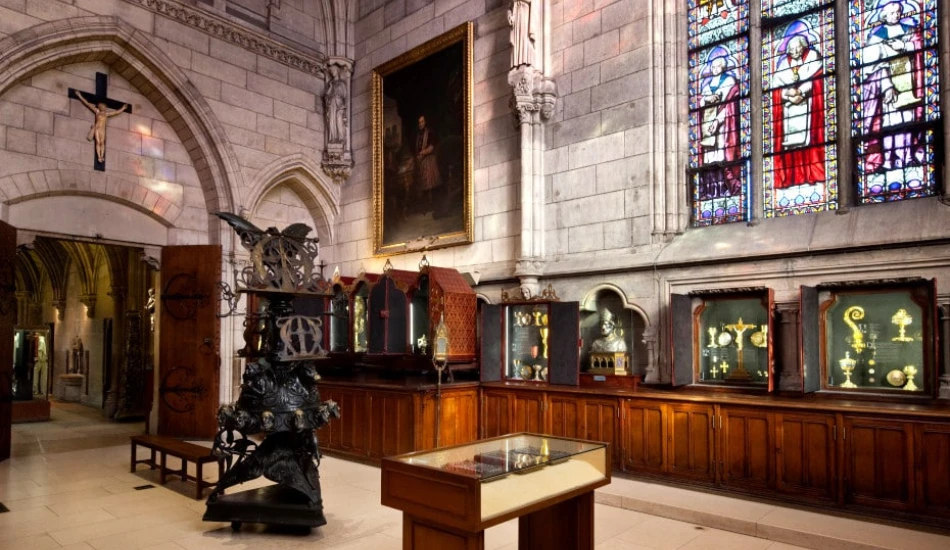
One of the most breathtaking sights inside Notre Dame is its treasury, housing sacred relics and historical treasures. Among its highlights are:
- The Crown of Thorns, believed to have been worn by Jesus during the crucifixion, is displayed in a beautifully crafted reliquary.
- The Sainte-Chapelle Nail, said to be one of the nails used during the crucifixion.
The entrance to the Treasury is located inside the cathedral on the south side. To access the Treasury, you’ll need a reservation or ticket for the main floor of the cathedral, or you can join the “visitors without a reservation” queue. However, no separate reservation is required specifically for the Treasury. There is an entrance fee of €12 per person, as the Treasury is classified as a museum. Tickets can only be purchased on-site at the Treasury, as online reservations are not available.
The Crypts
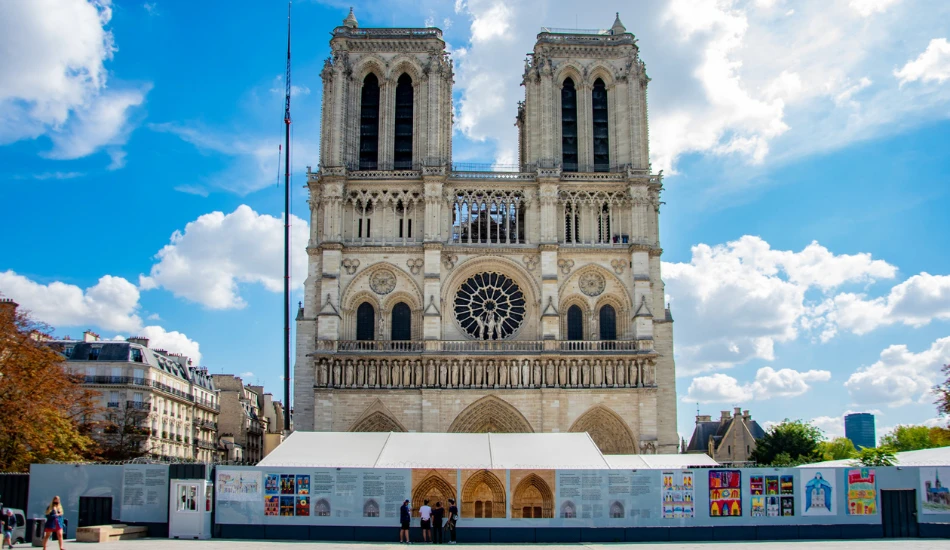
Not exactly part of the Cathedral, the crypts are located beneath the choir and apse of Notre Dame and are a must-visit for history lovers.
These crypts hold the tombs of many important figures, including French royalty like King Louis IX and Queen Isabeau of Bavaria, as well as archbishops and other notable individuals.
Walking through the crypts is like traveling back in time and offers a glimpse into France’s history and connection to Notre Dame.
One fascinating part of the crypts is the archaeological crypt, which has remained open to the public even during the cathedral’s restoration.
This section allows visitors to see ancient artifacts and learn about the historical foundations of Notre Dame and the city of Paris.
With detailed exhibits and well-preserved relics, the crypts provide an enriching experience for tourists.
Make sure to explore this hidden gem to uncover the stories of those who shaped Notre Dame’s history.
Visit the galleries too! The galleries of Notre Dame are located on the upper levels of the cathedral, and you must visit them too for the great views. From the galleries, you can look down at the beautiful interior of the cathedral and admire its intricate details from above. They also offer breathtaking views of Paris, making it a perfect spot for taking photos.
The Great Organ

The Great Organ of Notre Dame is a true masterpiece and one of the largest organs in France.
It has over 8,000 pipes and produces a powerful, beautiful sound that fills the entire cathedral.
The organ is used during concerts and religious services, making it a key part of Notre Dame’s musical history. Check the concert schedule.
After the fire, the organ was covered in lead dust, but the flames did not damage it.
Restorers carefully took it apart, cleaned every pipe, and reassembled it to its original glory.
The wooden case of the organ, decorated with carvings made by craftsmen long ago, shines in the sunlight coming through the restored windows.
Visitors will find the Great Organ in the upper levels of the west end of Notre Dame, above the main entrance.
It is located in the grand organ loft, overlooking the nave.
From there, the organ’s beautiful wooden case and intricate carvings can be admired, even if it’s not being played during your visit.
Attend a Concert or Performance at Notre Dame de Paris
Starting January 14, 2025, the Sacred Music at Notre Dame de Paris will host concerts every Tuesday evening at 8.30 pm inside the iconic cathedral.
How to Purchase Tickets:
– Visit the official website and navigate to the “The Concerts” (or “Les Concerts”) section.
– Click on “Season 2024-2025” (or “Saison 2024-2025”).
– Select the month of the concert you’d like to attend to view the schedule.
– Choose your desired concert from the list to book your tickets.
Tickets are priced between €15 and €40, depending on the concert and the ticket category.
Free Organ Performances:
For music lovers, there’s also a free organ performance every Sunday at 4 pm.
The Bell Tower
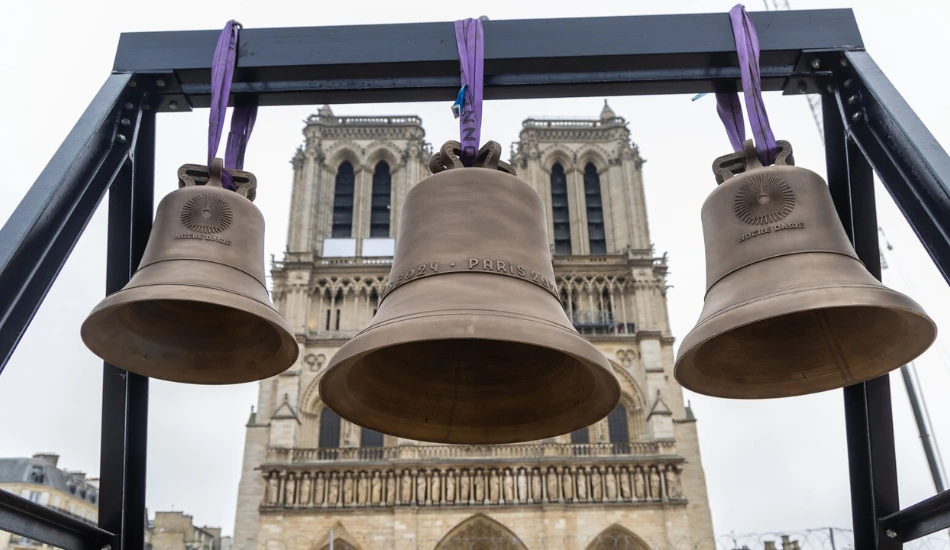
The Bell Tower of Notre Dame is one of the most iconic features of the cathedral.
Located above the west facade, it houses 13 bells, each with its own unique sound.
The largest and most famous bell, Emmanuel, weighs over 13 tons and has been part of Notre Dame’s history for centuries.
The Bell Tower is famous not only for its bells but also for offering breathtaking views of Paris from above.
Unfortunately, the bell towers are currently closed to visitors due to unexpected damage in the south tower’s belfry.
The bell towers are expected to reopen on 20th September 2025.
Once reopened, climbing the tower to see the bells and enjoy the stunning views will be an unforgettable experience.
Recommended read: Visiting Bell Tower
Visitors cannot walk on the roof of Notre Dame, but they will soon have a chance to see it from a special viewing area!
This terrace, located between the south and north bell towers, offers a close view of the newly rebuilt roof and its wooden framework. Before the fire, this area was not open to the public, making it an exciting addition for visitors.
The Spire
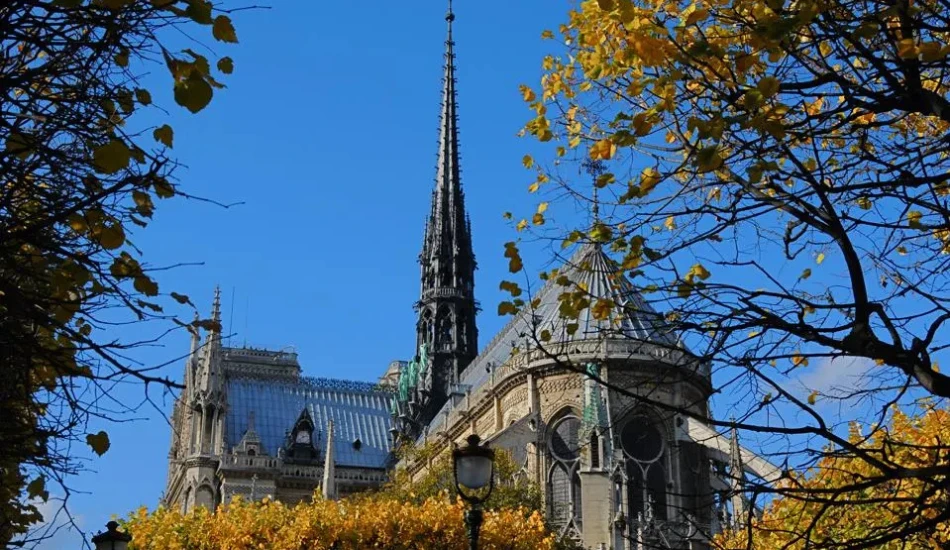
The new spire of Notre Dame is a remarkable feature, soaring to a height of 96 meters (approximately 315 feet). It is an exact recreation of the original spire designed by Viollet-le-Duc in the 19th century.
Constructed with oak and covered in lead, the spire is crowned with a gleaming golden rooster with sacred relics, including those linked to St. Denis, St. Genevieve, and the Crown of Thorns.
Inside, a scroll lists the names of individuals who contributed to the cathedral’s restoration efforts.
Visitors can marvel at this extraordinary architectural element from outside the cathedral, where it proudly towers above, adding a majestic touch to the skyline of Paris.
Before exiting, take a moment to explore the gift shop located at the end of the visitor route. Its open Monday to Friday from 9:30 am to 7 pm (until 10 pm Thursdays) and weekends from 9:30 am to 7:30 pm.It’s best to visit earlier in the day to avoid crowds and grab unique items, including limited-edition souvenirs commemorating Notre Dame’s restoration.
The Chapels
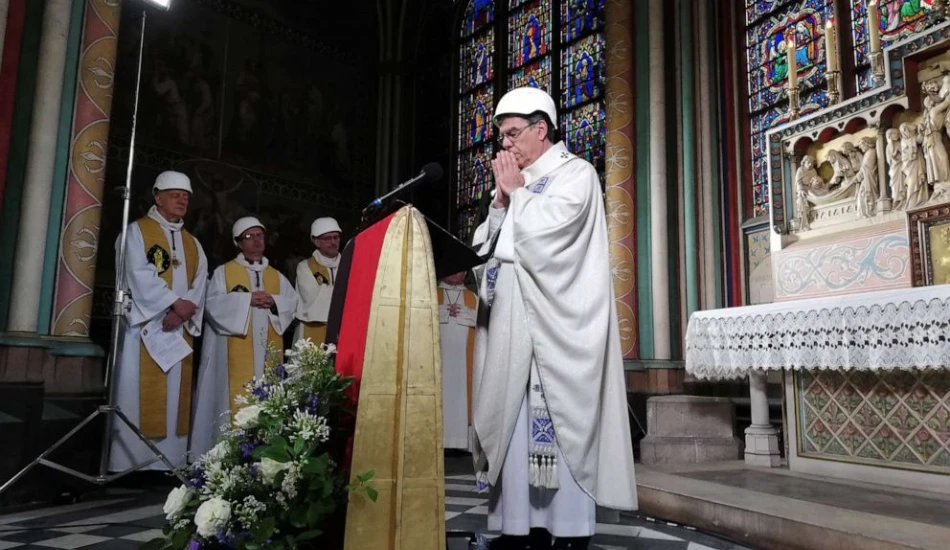
The chapels of Notre Dame are a series of 29 beautiful spaces that surround the nave and choir of the cathedral.
Each chapel has its own unique design, decorations, and story to tell.
During the restoration, intricate murals, golden stars on ceilings, and colorful motifs were uncovered, making the chapels even more stunning.
One of the most remarkable chapels is the Chapel of Saint Marcel, where visitors can see a brightly restored mural showing the relics of Saint Marcel.
They are perfect spots for quiet reflection and admiring the cathedral’s intricate details.

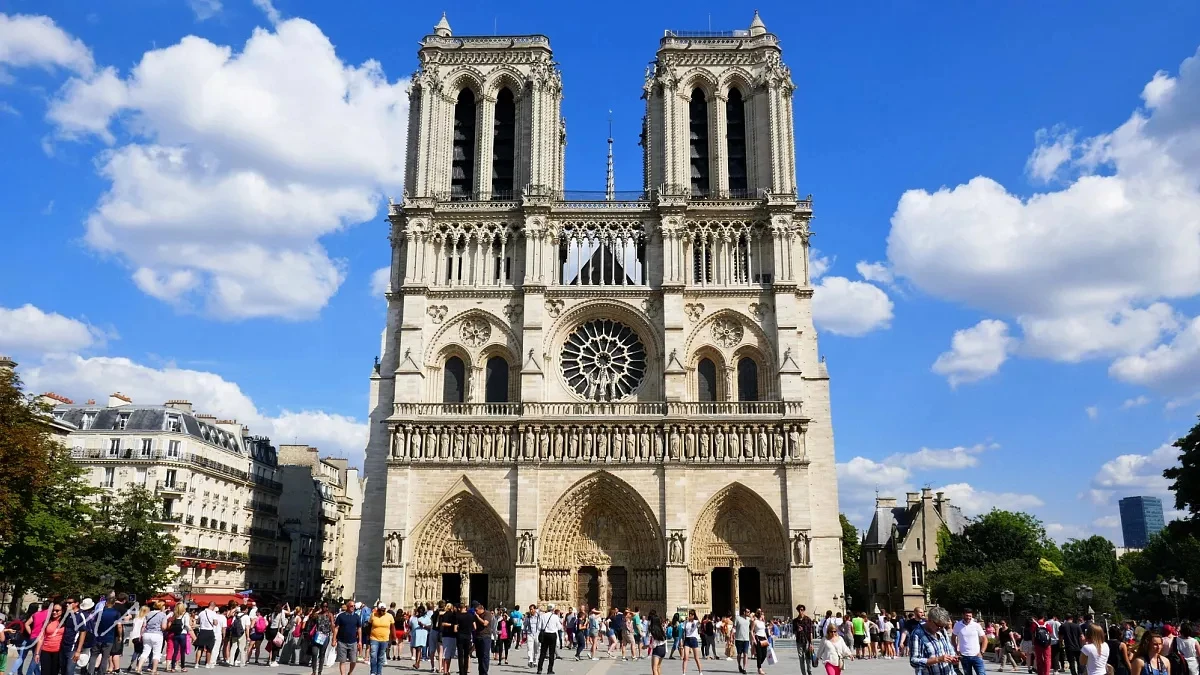
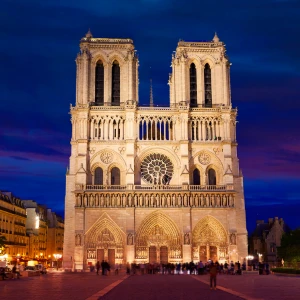
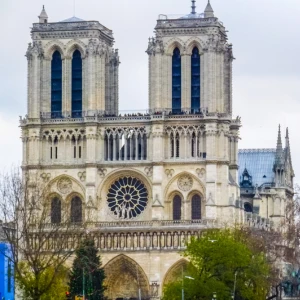
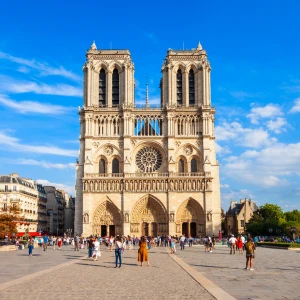
Were the bells damaged in the 2019 fire? Can we still hear them?
Most of Notre‑Dame’s main bells survived the 2019 fire, though smaller flèche bells were lost. The eight northern bells were cleaned, reinstalled, and rang again in November 2024.
If you’re visiting soon, attend a Mass or special ceremony—they often include bell ringing.